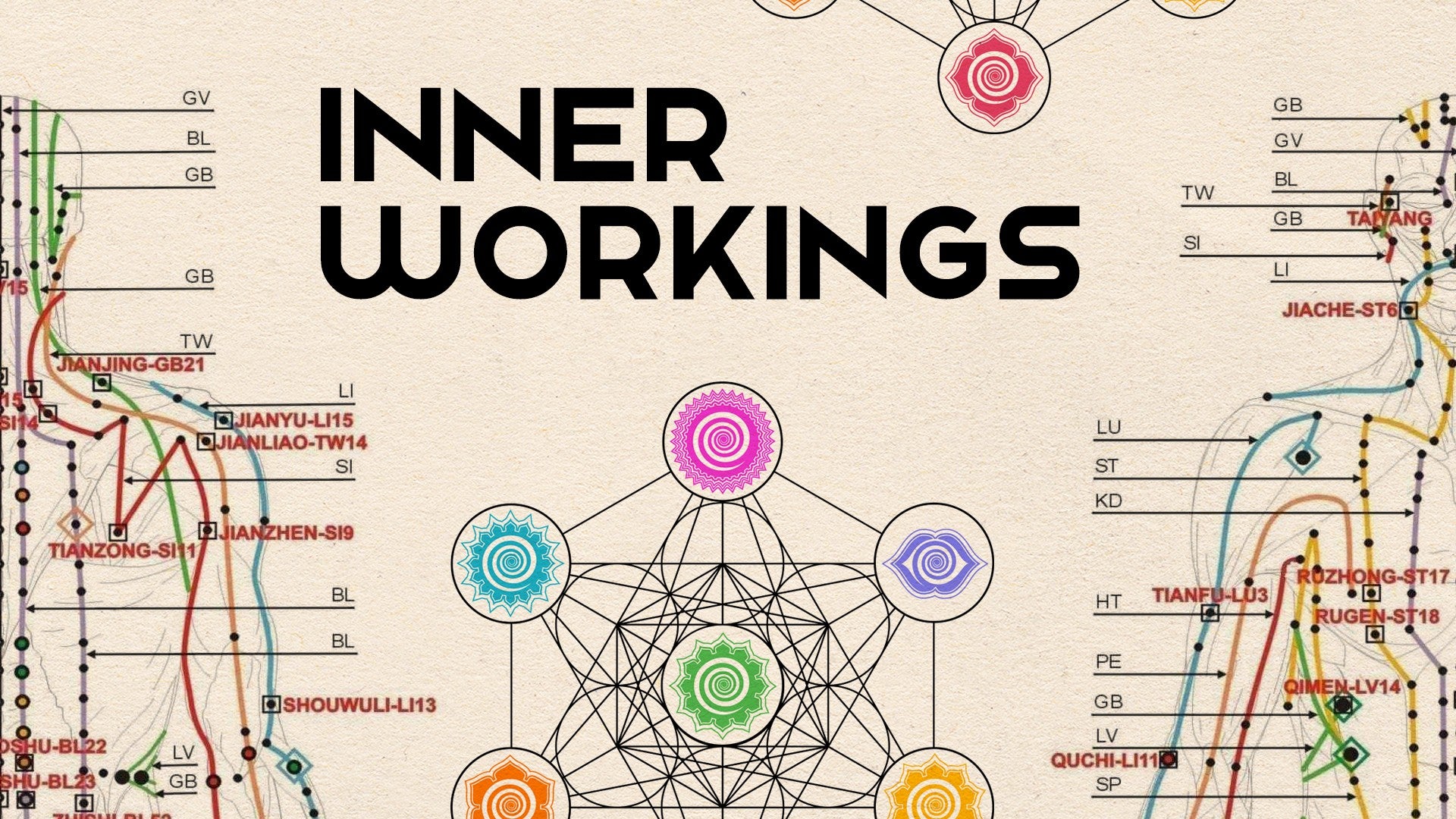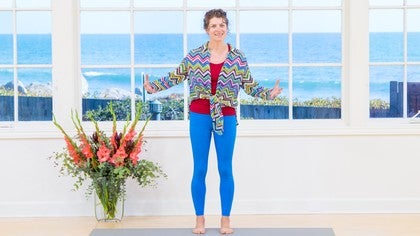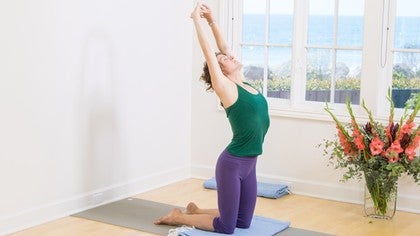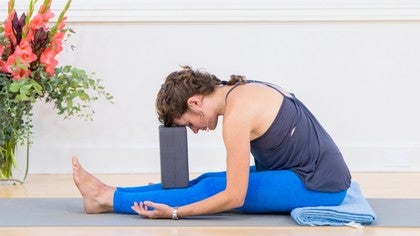Description
About This Video
Transcript
Read Full Transcript
I want to talk about proprioception. What is proprioception? Proprioception is how you find out from your body, from your muscles, from especially the muscles around your joints, from your other connective tissue, how you find out where you are, where your thumb is, where your elbow is, where your pelvis is, in space, how you know the positioning of your joints. You have other ways that you find out where you are, right? You have your eyes, you have your vestibular system inside your ears that tells you about your relationship to gravity. You really, really use your proprioceptive system every second. It tells you where you are. You have proprioceptors in your eyes that let you know how much force it takes to change the shape of the lens, and that tells your nervous system via your proprioceptors how far away the thing is that you're looking at. You have proprioceptors inside your vocal cords that let you know about the tone of your voice and the volume of it. The information that we believe that we have about the world, like distance to an object or how your voice sounds, they seem, those pieces of information seem to be coming to us from outside, and to an extent they are. You see with your eyes, you speak with your voice, you hear with your ear, and yet the action of proprioception is to make it about you. The word proprioception includes the two pieces, proprio, which is the self, and the piece, the particle sep, which comes from a Latin word that means to take or receive. We use it like we use proprioception, this little word piece, both to mean what you can receive, what you can open yourself to, and also what you can grasp, what you can take and hold and keep. And that really speaks to the dual or the multi-function of proprioception in our systems and the ways that we can use it to give us better connection to the present moment. When I'm in a yoga posture, I'm doing my trikonasana, and I'm feeling around in my body, I'm traveling from the big toe mound to the pubic bone, from the pubic bone into the bowl of the pelvis, into the cylinder of the pelvis, I'm traveling up the spine, I'm feeling for my energy centers, all of that traveling is proprioception. When I make the posture a little bit more intense, it's feeling juicy, it's feeling good, and I really pour myself into it, and I start to get a lot of really intense sensation somewhere, the proprioceptors there are offering a lot of information. A lot of that information is there in part to protect me. They're starting to shout, they're saying, oh the muscle spindle cells, oh they're really, they're both tightening to protect you and they're stretching to protect you, there's a lot happening. Other places in the body I can't hear as well. My proprioception in those places is overtaken by my proprioception somewhere else. And the result of that is that I experience myself as a less whole being. And in that moment what I want is to increase proprioception. I want to turn the volume down on the shouting so that I can hear everybody, the whole family. And the ways to do that in a posture are to limit the range of motion, to narrow the kinesphere, the space that you're taking up, to offer support, maybe you want to put a hand on the wall, maybe you need a block underneath the hand, maybe you want to get closer to the floor, and to stop. And that last one, to stop, maybe just means you choose a different position. But it speaks to the need in our proprioceptive system to be listened to. Hearing the information that comes to you from your proprioceptors betters the connection for your next hearing. Just like with my kids, when they try to tell me how they feel, and I tell them how they should feel, or that it would be great if they could tell me that later because right now I'm trying to do something, I lessen the chances that they will try to tell me how they feel next time. I'm damaging very, very slightly, very slightly, I'm narrowing the channel that we have between us. And sometimes it's necessary, sometimes your proprioceptors are like, that's too heavy and you're like, but I'm already holding it. The way that we can overcome the information that we get from our systems is beautiful and necessary so that we can live.
But that for me is not part of my yoga practice. When I'm on the mat, when I'm in my meditation practice, what I want to do is open the channel. I want to make myself available for the information that's coming to me. And proprioception is a huge vehicle for that ability, for that act of being present. It will let you know if you're present. And one of the ways that I find out that I wasn't present later is that I'm injured. Even if it's just a tiny little injury, my assumption is that there was information or that there could have been information about that positioning, but that I couldn't hear it, or that I did hear it and I very quickly disregarded it. And the possibilities of developing our proprioceptive relationship include not only protecting ourselves from injury and damage, but also pouring ourselves into the experience of being in our bodies in the world. Proprioception is not the only way we find out how we feel. We have a whole other set of receptors. We have one that's called interoception. That's to see, for example, what the guts feel like when you have the kind of gurgling feeling, not just the sound, but the gurgling feeling in your intestines. You know about that because of interoception. You don't have proprioceptors in your guts, which is why you can't feel all the little folds and traveling pieces in the way that you can feel the muscles of the arm. This is about the ability to be active, and you're knowing in the places where you are active, where you have choice. We also have pain receptors, and pain receptors are, for the most part, outside of the proprioceptive system. And it's one of the ways that we can tell when we need to say, no, I need to get out, is when you transfer from the proprioceptive system into the pain system. But another thing that I want to say about that is that when we're in pain, when you have pain, your toe is stubbed, your back is out, your tooth is impacted. You can feel how that part of you grows in your sense of yourself. And over time, when you're experiencing chronic pain, it actually does change the impression of that place in your body on your brain. But even in the short term, that place feels giant, right? You have to do such elaborate things to keep the toe from being stubbed again, or to keep from biting your cheek again, right? The proprioceptive system acts around that pain to help give you information about the rest of yourself, about what else is going on. And it really brings me into the experience of being in meditation. When you have a problem in your life, and you're just, oh, you just got the ice pick, and you're just jamming away at it. And when meditation works, it's because it says, oh, but look, there's all this space around this. This is like one little piece in all of this. And that's what proprioception has the capacity to do. It can give you back your whole self without needing to get rid of the other true things like pain that are part of your experience. It feels so important to me that we make it possible for all different kinds of people to be able to be in the room practicing together separately. And the way to that, that I can feel, that I can see in my practice, is to have space in the practice for my whole self, for all of the pieces of me. And proprioception feels like an opportunity, like a method, a very grounded, practical way of connecting to all the ways that I feel, and all the ways that I am. And when I do the work, as we've done in other episodes, of locating central places from which to feel, out into space, and into which to feel from the edges, I'm helped in entering the system that is infinite in its information that it has to offer and in its locations in our body. I invite you to explore that connection as a way to create a positive feedback loop with presence and belonging in your own practice. Thank you.
Inner Workings: Devon Riley
Comments
You need to be a subscriber to post a comment.
Please Log In or Create an Account to start your free trial.












